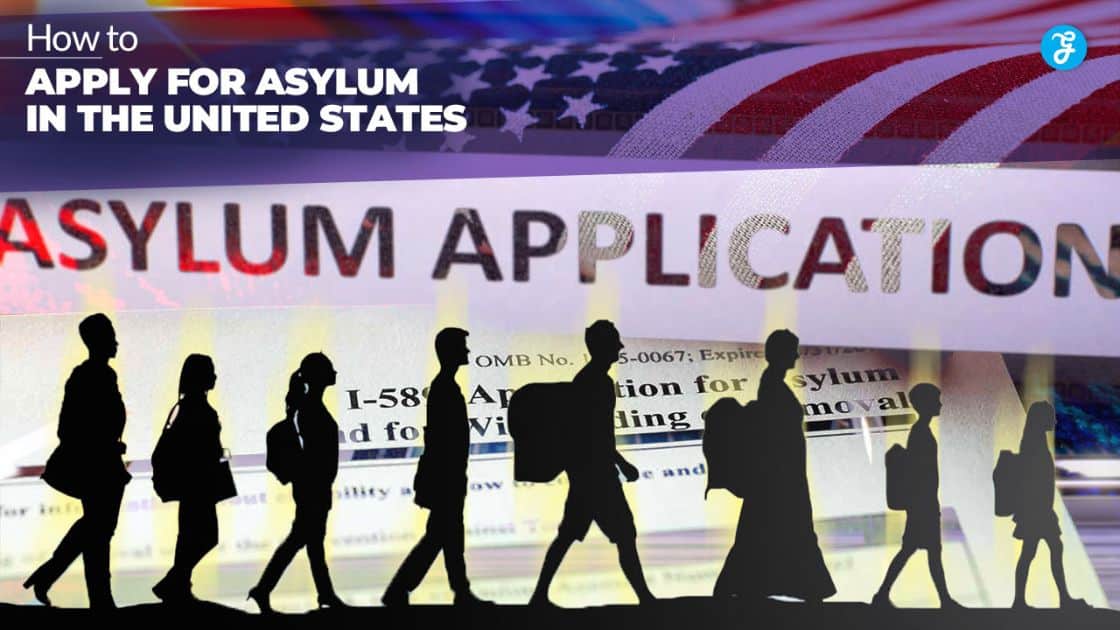Seeking asylum in the United States is a critical option for individuals fleeing persecution and danger in their home countries. Want to know how to apply for asylum in the USA?
This guide provides a detailed, step-by-step explanation of the asylum application process in the U.S. for 2025. By following these steps, you can better understand the requirements, prepare effectively, and navigate the system with confidence.
What is Asylum in the United States?
Asylum is a form of protection granted to individuals who cannot return to their home country due to persecution or fear of persecution based on race, religion, nationality, political opinion, or membership in a particular social group.
Unlike refugee status, which is applied for outside the U.S., asylum is sought within the country or at a port of entry.
Types of Asylum
| Type | Description |
|---|---|
| Affirmative Asylum | Applied through USCIS when not in removal proceedings. |
| Defensive Asylum | Filed during removal proceedings as a defense against deportation. |
Eligibility Requirements for Asylum in the USA
To be eligible for asylum, you must demonstrate:
- A well-founded fear of persecution in your home country.
- Persecution based on one of the following:
- Race
- Religion
- Nationality
- Political opinion
- Membership in a particular social group
Who is Ineligible?
- Individuals involved in serious crimes or human rights violations.
- Applicants who have been firmly resettled in another country (defined as having received permanent residence or protection in another country before applying in the U.S.).
- Failure to file within one year of arriving in the U.S. (unless exceptional circumstances apply, such as severe illness or changes in conditions in the home country).
| Criteria | Eligible | Ineligible |
| Well-founded fear | Yes | No |
| Persecution-based reasons | Yes | No |
| Filed within one year | Yes | No |
| Serious criminal record | No | Yes |
Step-by-Step Application Process of Asylum in the USA
Applying for asylum in the United States is a structured process designed to provide protection for those who fear persecution in their home countries. Here’s a clear, step-by-step guide to help you understand the process.
Step 1: Preparing for the Application Process
Gather Required Documents
| Document Type | Examples |
| Identity Proof | Passport, birth certificate |
| Persecution Evidence | Police reports, medical records, photos |
| Witness Affidavits | Signed statements from individuals with knowledge |
Language and Legal Help
- Ensure your documents are translated into English.
- Seek assistance from immigration lawyers or nonprofit organizations offering pro bono services.
| Service | Provider |
| Legal Assistance | Immigration lawyers, nonprofit organizations |
| Translation Services | Certified translators, community resources |
Step 2: Filing Form I-589, Application for Asylum
How to File
- Download Form I-589 from the USCIS website.
- Fill out the form accurately and include your evidence.
- Submit the form to the appropriate USCIS service center.
Deadlines
You must file within one year of entering the U.S., unless exceptions like changed conditions or extraordinary circumstances apply.
| Task | Details |
| Form to file | I-589 Application for Asylum |
| Filing deadline | Within 1 year of U.S. arrival |
| Submission location | USCIS service center based on your residence |
| Filing fee | None |
Step 3: The Asylum Interview
What to Expect
- USCIS will schedule an interview to evaluate your application.
- The interview is conducted by an asylum officer who will ask about your case and verify your claims.
Tips for a Successful Interview
- Be truthful and consistent in your responses.
- Bring all relevant documents and evidence.
- Practice explaining your story in clear, concise terms.
- Consider having legal representation present.
| Aspect | Preparation Tip |
| Documentation | Organize all supporting documents. |
| Language barrier | Request an interpreter if necessary. |
| Legal representation | Bring an immigration lawyer or legal advocate. |
Step 4: While Waiting for a Decision
- Maintain Legal Status: If possible, ensure you’re complying with any visa requirements.
- Access Resources: Seek community support and legal aid to handle delays or uncertainties.
- Work Authorization: You may apply for an Employment Authorization Document (EAD) after 150 days if your case is still pending.
Special Considerations for Asylum Seekers
Understanding the unique challenges faced by different groups of asylum seekers is crucial for navigating the application process effectively. Here are some considerations to keep in mind.
Asylum for Unaccompanied Minors
Unaccompanied children have special protections under U.S. law. Their cases are often handled separately by the Office of Refugee Resettlement (ORR), and they may qualify for additional support like legal advocates and child-specific asylum services. It is critical to work with organizations familiar with these cases.
Filing for Asylum at the Border
Individuals arriving at a U.S. port of entry or detained at the border must express their intent to seek asylum during their credible fear interview with Customs and Border Protection (CBP). This initial interview is crucial for progressing with the asylum process.
Family-Based Applications
Families can include dependents (spouses and children under 21) in a single asylum application. Ensure all necessary documentation is provided for each dependent.
Mental Health Support
Asylum seekers often experience trauma and stress during their journey and application process. Seek counseling and support services from organizations such as the Center for Victims of Torture or local community health programs.
| Support Services | Provider |
| Trauma Counseling | Center for Victims of Torture |
| Community Health Clinics | Local nonprofit organizations |
Defensive Asylum Applications
If you are in removal proceedings, you can apply for defensive asylum as a means to prevent deportation.
Process
- File Form I-589 with the immigration court.
- Present your case to an immigration judge during a hearing.
- Provide evidence and testimonies to support your claims.
| Defensive Asylum Steps | Details |
| Filing location | Immigration court |
| Representation | Strongly recommended |
| Decision maker | Immigration judge |
Common Challenges and How to Overcome Them
| Challenge | Solution |
| Language barriers | Hire a translator or use pro bono language services. |
| Lack of evidence | Collect witness statements, media articles, or affidavits. |
| Meeting deadlines | Start early and seek legal help if delayed. |
| Detention | Work with legal aid organizations and request a bond hearing. |
| Fear of rejection | Work with experienced asylum lawyers. |
Legal Assistance and Resources
- Contact nonprofit organizations like the International Rescue Committee or HIAS.
- Use legal aid services like the American Immigration Council.
- Seek pro bono assistance from immigration lawyers.
| Organization | Services Offered |
| International Rescue Committee | Legal support and counseling for asylum seekers |
| HIAS | Legal aid and refugee support |
| American Immigration Council | Advocacy and pro bono legal services |
Rights and Responsibilities of Asylum Seekers
Rights
- Right to remain in the U.S. while your case is pending.
- Access to work authorization if certain conditions are met.
- Protection from removal until a decision is made.
Responsibilities
- Attend all scheduled interviews and hearings.
- Keep USCIS updated with your address.
- Comply with all U.S. laws.
| Rights | Responsibilities |
| Remain in the U.S. | Attend all hearings. |
| Apply for a work permit. | Update address with USCIS |
| Access resources | Obey U.S. laws. |
What Happens After a Decision?
Approval
You will be granted asylee status, allowing you to:
- Apply for a green card after one year.
- Petition to bring family members to the U.S.
Denial
- You can appeal the decision to the Board of Immigration Appeals (BIA).
- Explore other forms of relief, such as Temporary Protected Status (TPS).
Appeals Process
- File a Notice of Appeal with the BIA within 30 days of the decision.
- Work with legal representatives to strengthen your case.
- Prepare for additional hearings or reviews.
| Outcome | Next Steps |
| Approved | Apply for a green card; reunite with family. |
| Denied | File an appeal with the BIA. |
Takeaway
Applying for asylum in the United States is a complex process, but with proper preparation and assistance, it can provide life-changing protection for those fleeing persecution.
This guide outlines the essential steps and resources to help you navigate the system.
Remember, seeking legal assistance and staying informed are critical to your success.







































